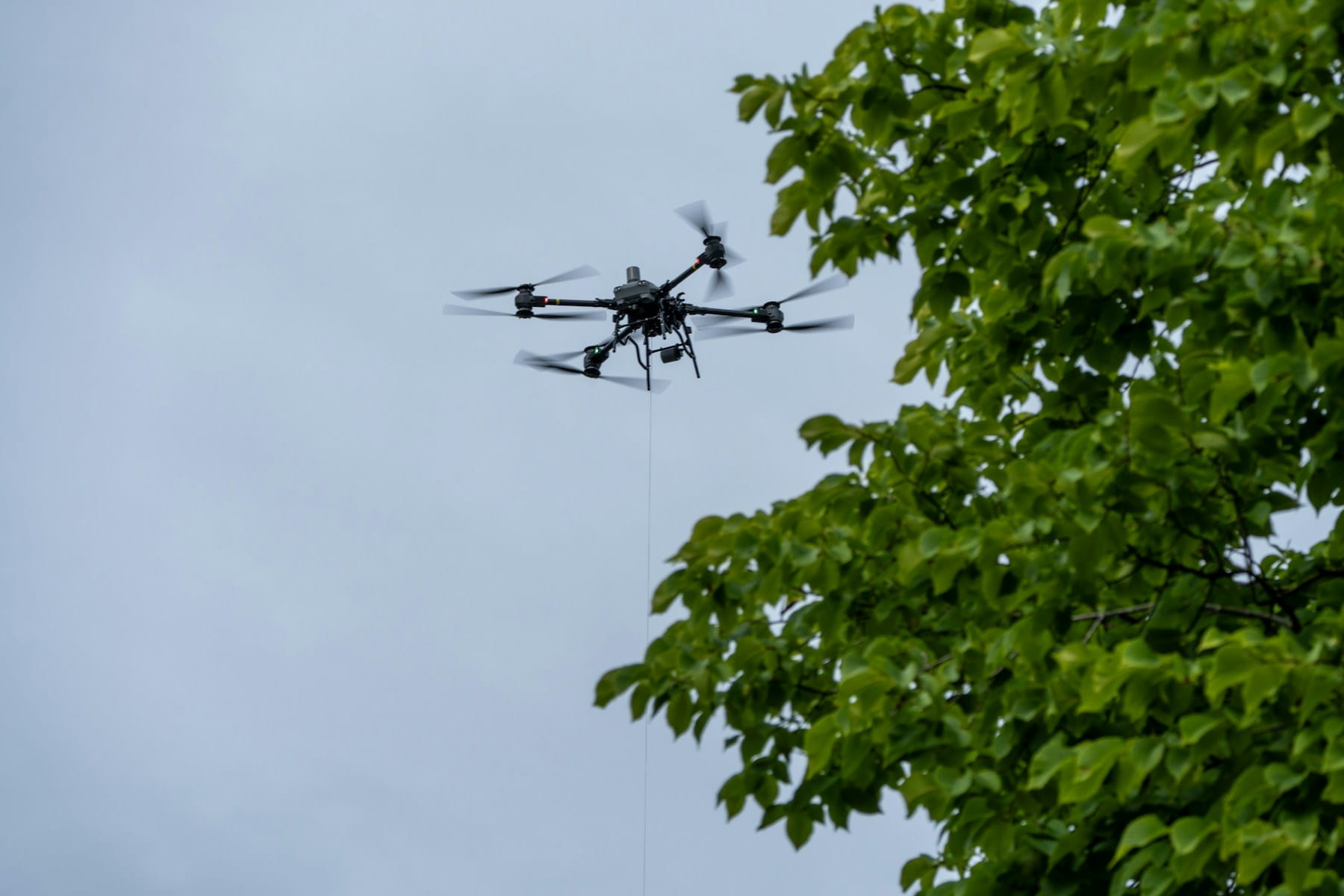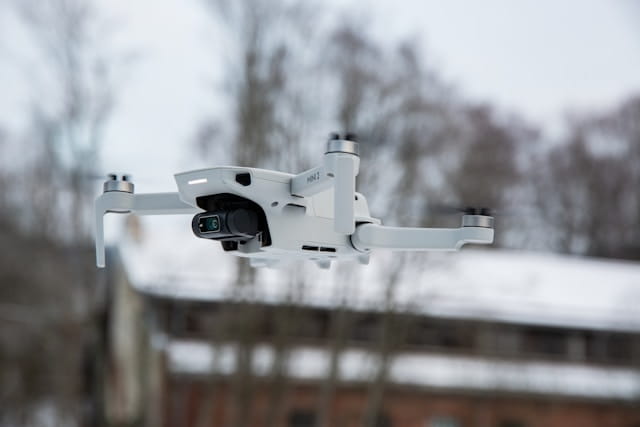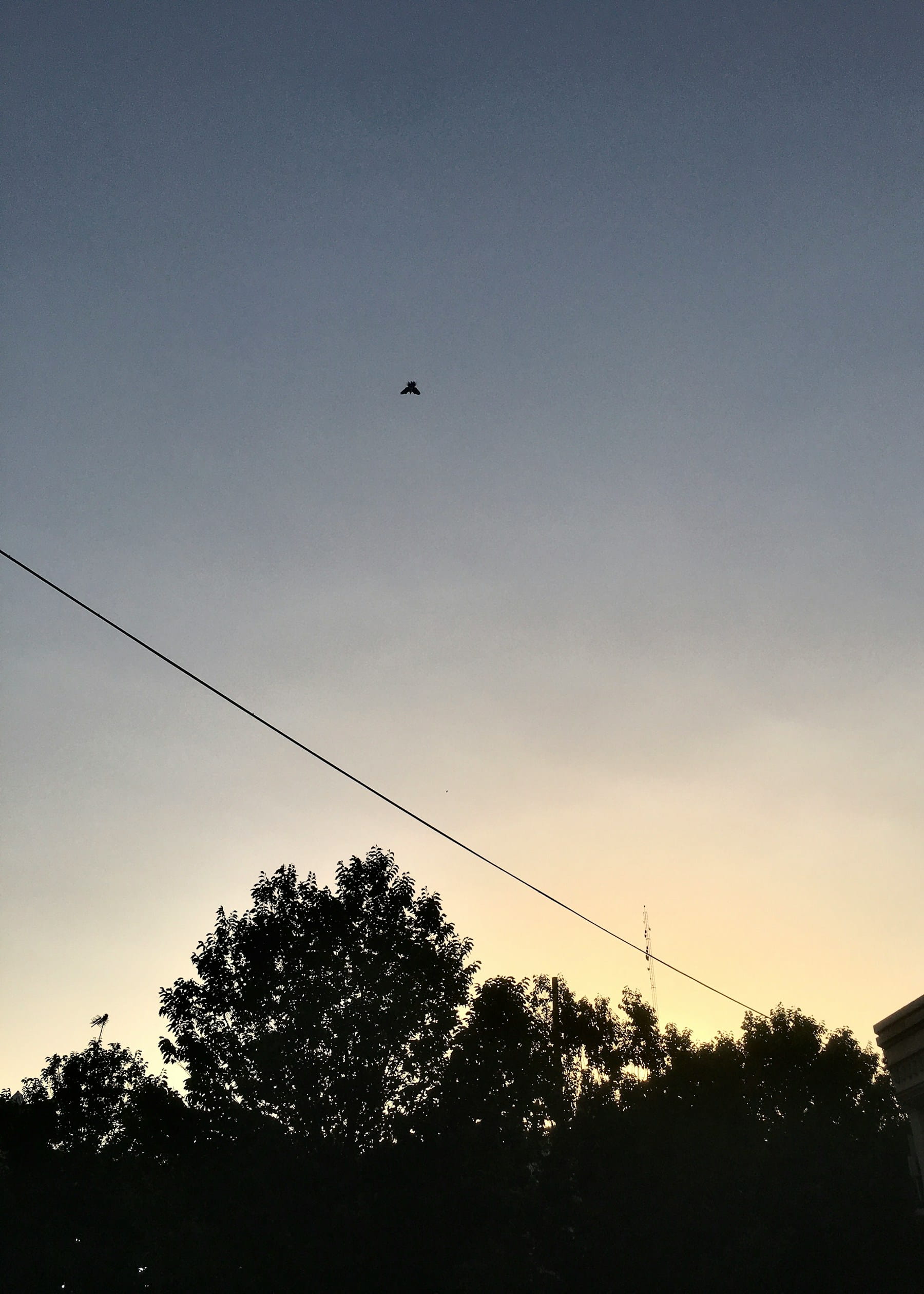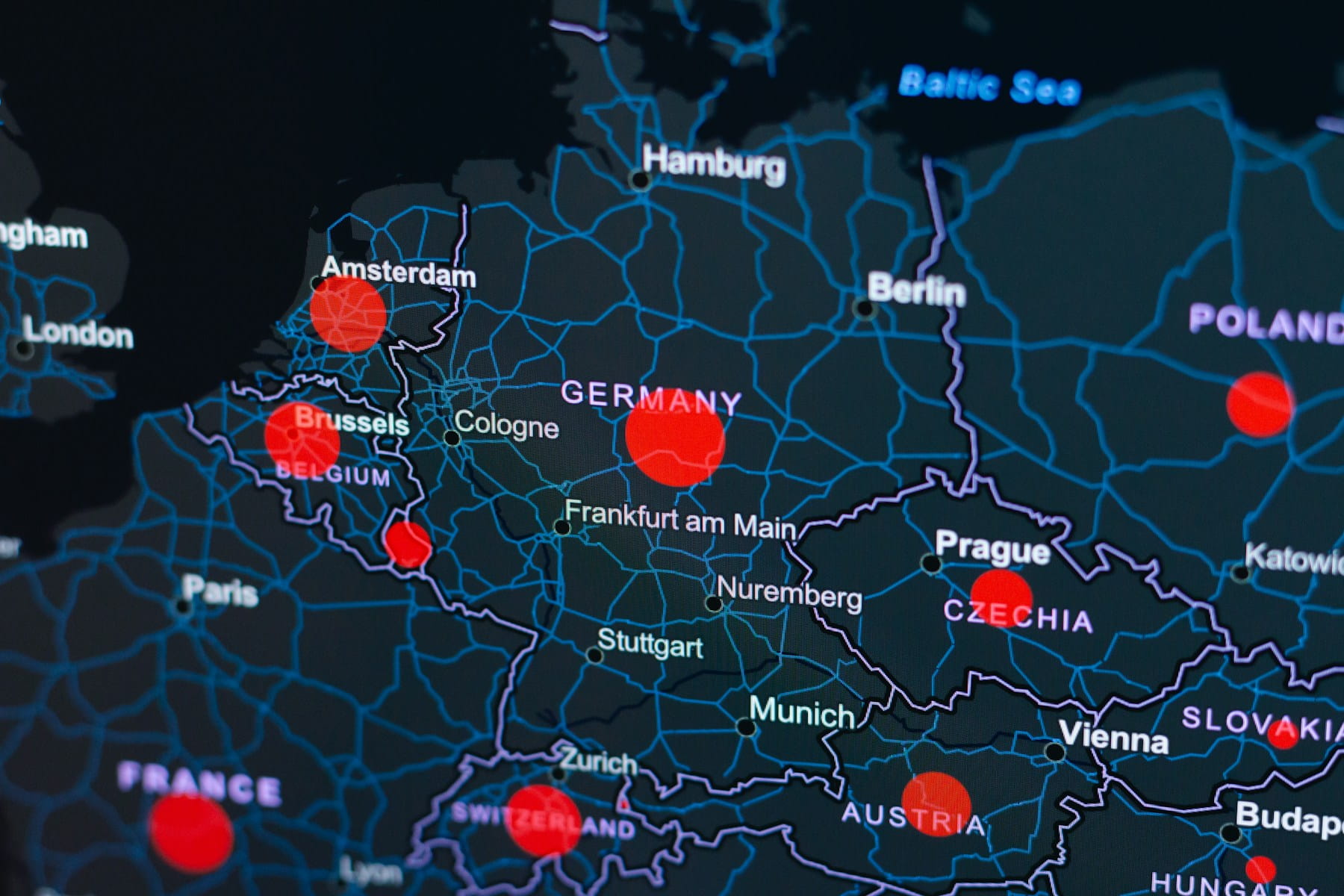U-space is Europe's innovative drone traffic management framework that enables safe, autonomous, and efficient integration of unmanned aircraft into crowded airspace through digital services and dynamic airspace control.
European aviation authorities have spent years wrestling with a fundamental challenge: how do you safely integrate thousands of drones into airspace that's already crowded with commercial aircraft, military operations, and private flights? The answer they've developed is U-space, a comprehensive framework that promises to revolutionize how unmanned aircraft systems operate across Europe.
U-space represents more than just another regulatory framework. It's an ambitious attempt to create a digital ecosystem where drones can operate autonomously while maintaining the safety standards that aviation has built over decades. Think of it as air traffic control for the drone age, but with artificial intelligence doing much of the heavy lifting.
The concept emerged from the European Union's recognition that traditional air traffic management simply wouldn't scale to handle the explosion in drone operations. Commercial inspections, package deliveries, surveillance missions, and recreational flights were all competing for the same airspace. Something had to give.
Table of contents
- Defining U-space airspace and services
- The regulatory foundation
- Core U-space services
- Service providers and operational structure
- Integration with existing air traffic management
- Operational procedures for drone pilots
- Dynamic airspace management
- Technology requirements and implementation
- Current status across EU member states
- Challenges and limitations
- Future developments and timeline
Defining U-space airspace and services
U-space operates through two interconnected concepts that work together to manage drone traffic. The first is U-space airspace, which refers to specific geographical zones designated by EU member states where drone operations can only take place with the support of dedicated services. These aren't arbitrary boundaries drawn on a map - they're carefully planned volumes of airspace where the infrastructure exists to support automated drone management.
The second concept is U-space services themselves. These are digital services that rely on automation to support safe, secure, and efficient access to the designated airspace for large numbers of unmanned aircraft systems. The services handle everything from flight authorization to real-time traffic monitoring.
What makes U-space different from traditional air traffic control is its distributed nature. Instead of having a single controller managing all aircraft in a sector, multiple service providers can operate in the same airspace, each potentially serving different customers or specialized operations. This creates redundancy and competition while maintaining safety standards.
The designation of U-space airspace happens at the national level, with each EU member state deciding where and how to implement these zones. Some countries have started with urban areas where drone deliveries are expected to flourish. Others have focused on industrial zones where inspections and surveying operations are common.
These designated areas come with specific requirements. All drone operations within U-space airspace must use the mandatory services, and operators must comply with digital authorization processes rather than traditional manual approvals. The idea is to create a seamless, automated experience that can handle hundreds or thousands of simultaneous operations.
The regulatory foundation
The legal framework for U-space rests on several EU regulations, with Regulation (EU) 2021/664 serving as the primary foundation. This regulation doesn't just define what U-space is - it establishes the legal mechanisms that make it possible for member states to designate these special airspace zones and require specific services within them.
Regulation (EU) 2019/947 provides the broader context by establishing the rules for drone operations across the EU. These two regulations work together to create a comprehensive system where drone operators know exactly what's expected of them, regardless of which member state they're operating in.
The regulatory approach reflects lessons learned from decades of aviation safety management. Rather than trying to retrofit existing air traffic control systems to handle drones, European regulators decided to build something new from the ground up. This allowed them to incorporate modern digital technologies and automated processes that wouldn't have been possible within traditional aviation frameworks.
One interesting aspect of the regulatory structure is how it handles the relationship between manned and unmanned aircraft. The regulations don't create separate airspace for drones - instead, they create mechanisms for dynamic coordination between different types of aircraft operations. This means a helicopter conducting power line inspections and a drone surveying the same area can potentially share the same airspace, with U-space services managing the coordination.
The legal framework also addresses liability and responsibility in ways that traditional aviation regulations don't. When multiple service providers operate in the same airspace, the regulations specify who is responsible for what aspects of safety management. Understanding comprehensive drone compliance requirements ensures operators meet all regulatory obligations. This clarity helps prevent gaps in oversight while avoiding duplicated responsibilities.
Core U-space services
Four mandatory services form the backbone of U-space operations, each addressing a specific aspect of drone traffic management. These services work together to create a comprehensive safety net that allows multiple drone operations to take place simultaneously without human air traffic controllers managing each individual flight.
Network identification service serves as the foundation by providing real-time information about drone operators and their aircraft locations. Every drone operating in U-space must broadcast its identity and position continuously. This creates a digital picture of all air traffic that other services can use for decision-making.
The service goes beyond simple position reporting. It also tracks planned trajectories, allowing the system to predict where conflicts might occur before they happen. When a drone deviates from its planned route, the network identification service immediately flags this information for other services to process.
Geo-awareness service provides drones with information about their operating environment. This includes temporary flight restrictions, weather conditions, obstacles, and other factors that might affect flight safety. The service acts like a constantly updated map that tells drone operators what they need to know about their intended flight path.
What makes geo-awareness particularly powerful is its real-time nature. Traditional aviation relies on NOTAMs (Notice to Airmen) that pilots must check before flights and briefings that can become outdated quickly. Understanding different types of airspace helps operators navigate these restrictions effectively. Geo-awareness service pushes updates directly to drones and operators as conditions change, ensuring they always have the most current information.
UAS flight authorization service functions as the traffic management core of U-space. Before any drone can begin operations, this service analyzes the requested flight path against all other planned and active operations in the area. It either approves the flight, suggests modifications, or denies authorization based on potential conflicts.
The authorization process happens digitally and can be completed in minutes rather than the hours or days required for traditional aviation approvals. The service uses algorithms to identify potential conflicts and automatically generates flight paths that avoid other air traffic while meeting the operator's mission requirements.
Traffic information service provides real-time alerts about nearby air traffic that might pose a collision risk. This service monitors all aircraft in the area - both manned and unmanned - and alerts drone operators when traffic conflicts develop. The service bridges the gap between automated conflict detection and human decision-making.
Unlike traditional air traffic control, where controllers issue specific instructions to pilots, traffic information service provides alerts and lets drone operators decide how to respond. This maintains the autonomous nature of drone operations while ensuring operators have the information they need to make safe decisions.
Service providers and operational structure
U-space service providers operate under a unique model that differs significantly from traditional air traffic services. Multiple providers can serve the same airspace simultaneously, creating a competitive environment while maintaining safety standards. This structure reflects the distributed nature of drone operations and the need for specialized services.
Service providers must meet specific technical and operational requirements before they can begin operations. These include having the necessary infrastructure to provide real-time services, establishing data-sharing agreements with other providers and air traffic control units, and demonstrating the ability to handle the required volume of operations safely.
The multi-provider model creates some interesting dynamics. Drone operators can potentially choose between different service providers based on factors like cost, service quality, or specialized capabilities. Some providers might focus on serving commercial inspection operations, while others specialize in urban delivery services.
Service providers must coordinate with each other constantly. When a drone authorized by one provider flies near operations managed by another provider, the two services must share information and coordinate their activities. This requires sophisticated data-sharing protocols and common technical standards.
Interestingly, drone operators can also serve as their own U-space service providers if they meet the regulatory requirements. Large commercial operators with extensive drone fleets might find it more efficient to provide their own services rather than relying on external providers. However, they still must coordinate with other service providers and follow all the same technical and safety requirements.
The economic model for service providers is still evolving. Some charge operators per flight, others use subscription models, and some are exploring performance-based pricing where operators pay based on the complexity or priority of their missions. This flexibility allows the market to develop pricing structures that work for different types of operations.
Integration with existing air traffic management
One of the most complex aspects of U-space implementation is how it integrates with existing air traffic control systems. Traditional air traffic management was designed for human controllers managing relatively small numbers of aircraft with direct radio communication. U-space needs to work alongside this system while handling potentially thousands of automated operations.
The integration happens through several mechanisms. Air traffic control units receive information about drone operations in their airspace through automated data feeds. Controllers can see where drones are operating and planned to operate, allowing them to make informed decisions about manned aircraft routing.
When U-space airspace is designated within controlled airspace, special coordination procedures apply. Air traffic controllers retain the authority to modify or restrict drone operations when necessary to accommodate manned aircraft. Understanding airspace classifications helps operators navigate these complex coordination requirements. This might happen during busy periods at nearby airports or when emergency aircraft need priority routing.
Dynamic airspace reconfiguration represents one of the most innovative aspects of U-space integration. Controllers can temporarily modify the boundaries of U-space airspace or change the types of operations allowed within it. For example, during a medical helicopter emergency, controllers might temporarily prohibit drone operations in a specific corridor to ensure clear airspace for the helicopter.
The integration also works in reverse. U-space services provide traffic information about manned aircraft to drone operators, creating situational awareness that helps prevent conflicts. When a small aircraft enters airspace where drones are operating, the U-space services alert drone operators and may modify authorized flight paths to maintain separation.
This two-way information flow creates a more complete picture of airspace usage than either system could achieve alone. Air traffic controllers gain visibility into drone operations they previously couldn't track, while drone operators receive professional-grade traffic information that was previously only available to manned aircraft.
Operational procedures for drone pilots
Operating in U-space requires drone pilots to follow specific procedures that differ from traditional aviation protocols. The process begins before each flight with a digital authorization request submitted to the pilot's chosen U-space service provider. This request includes detailed information about the planned mission, including route, altitude, timing, and aircraft specifications.
The authorization process typically happens automatically, with algorithms analyzing the request against current and planned operations in the area. Simple flights in uncongested airspace might receive authorization within minutes, while complex operations in busy areas could require more detailed analysis and potentially human review.
Once authorization is granted, pilots must request activation before beginning their flight. This two-step process allows the system to distinguish between authorized future flights and active operations. The activation request confirms that the pilot is ready to begin and that conditions haven't changed since the original authorization was granted.
During flight operations, pilots must monitor communications from their U-space service provider continuously. The service may issue updates about changing conditions, traffic conflicts, or modifications to the authorized flight path. Unlike traditional aviation where pilots respond to controller instructions, U-space communications are often informational, letting pilots make their own tactical decisions.
Compliance with authorized flight parameters is critical in U-space operations. The system tracks actual flight paths against authorized routes and issues alerts when drones deviate beyond acceptable thresholds. Pilots who cannot maintain compliance must request new authorizations or modify their operations to return to authorized parameters.
The digital nature of U-space operations means that most communications happen through data links rather than voice radio. Pilots interact with service providers through mobile applications, web interfaces, or integrated aircraft systems. This creates a more automated experience but requires pilots to be comfortable with digital communication methods.
Dynamic airspace management
Dynamic airspace management represents one of U-space's most sophisticated capabilities. Unlike traditional airspace that has fixed boundaries and rules, U-space can adapt its configuration in real-time based on changing conditions. This flexibility allows the system to optimize airspace usage while maintaining safety margins.
The dynamic capabilities operate on several levels. At the most basic level, service providers can modify individual flight authorizations as conditions change. If weather develops along a planned route, the service might automatically generate an alternative path that avoids the hazardous area.
More significantly, airspace boundaries themselves can change. During periods of high air traffic demand at major airports, U-space areas near approach paths might be temporarily reduced or closed. Emergency situations can trigger immediate airspace reconfigurations that prioritize critical operations over routine drone flights.
The system can also respond to unexpected events like aircraft emergencies or security threats. When an emergency aircraft needs priority routing, U-space services can automatically clear corridors by modifying or suspending drone operations in the affected area. This happens much faster than would be possible with manual coordination.
Weather integration drives many dynamic adjustments. As meteorological conditions change throughout the day, U-space services modify authorized operating areas and flight parameters. Drones might be restricted to lower altitudes when clouds lower, or operations might be suspended entirely during severe weather.
The predictive aspects of dynamic management are particularly interesting. Machine learning algorithms analyze traffic patterns, weather forecasts, and historical data to anticipate when airspace modifications might be needed. This allows the system to proactively adjust operations rather than just reacting to problems after they develop.
Technology requirements and implementation
The technology infrastructure supporting U-space represents a significant advancement in aviation systems. Unlike traditional air traffic control that relies primarily on radar and radio communications, U-space depends on continuous data connections, cloud computing, and artificial intelligence to manage operations.
Communication systems form the foundation of U-space technology. All participating drones must maintain continuous data connections with their service providers, transmitting position, status, and operational information in real-time. This requires robust cellular or satellite communication networks that can handle thousands of simultaneous connections.
Data processing requirements are enormous compared to traditional aviation systems. Each drone generates continuous streams of position and status data, while service providers must analyze this information against complex airspace restrictions, weather conditions, and other traffic. The computational demands require modern cloud computing infrastructure and sophisticated algorithms.
Interoperability standards ensure that equipment from different manufacturers can work together seamlessly. Drones from one manufacturer must be able to operate with services from different providers, while service providers must share data with each other and with air traffic control systems. This requires common data formats and communication protocols.
Security represents a critical technology requirement. The digital nature of U-space operations creates potential cyber security vulnerabilities that don't exist in traditional aviation. Service providers must protect against unauthorized access, data manipulation, and service disruption while maintaining the real-time performance that safe operations require.
The human-machine interface aspects of U-space technology focus on making complex systems accessible to drone operators who may not have extensive aviation backgrounds. Mobile applications and web interfaces must present critical safety information clearly while hiding the underlying system complexity.
Current status across EU member states
Implementation of U-space varies significantly across European Union member states, reflecting different national priorities, infrastructure capabilities, and regulatory approaches. Some countries have moved aggressively to establish U-space zones, while others are taking more cautious approaches focused on testing and evaluation.
The Netherlands has emerged as one of the early leaders in U-space implementation, with several designated zones supporting various types of operations. Dutch authorities have focused on urban environments where drone deliveries and emergency services applications show the most promise. Their approach emphasizes integration with existing aviation infrastructure around major airports.
Germany has taken a more industrial focus, with U-space implementations concentrated around manufacturing centers and logistics hubs. German authorities have been particularly interested in using U-space to support automated inspections of critical infrastructure like power lines and industrial facilities.
France has pursued U-space development primarily around major metropolitan areas, with Paris serving as a key testing ground for urban drone operations. French implementation has placed particular emphasis on security considerations and integration with law enforcement capabilities.
Several member states are still in early planning stages, conducting feasibility studies and stakeholder consultations before committing to specific implementation approaches. These countries are benefiting from lessons learned by early adopters while developing approaches that fit their specific national circumstances.
The patchwork of different implementation approaches creates both opportunities and challenges. Drone operators who work across multiple countries must understand different U-space configurations and requirements. However, the diversity also allows for testing different approaches and identifying best practices that can be adopted more widely.
Challenges and limitations
U-space implementation faces several significant challenges that affect both the pace of deployment and the scope of operations it can support. Technology integration issues top the list, as service providers struggle to create systems that can handle the required volume of operations while maintaining acceptable levels of reliability and security.
The economic sustainability of U-space services remains unclear in many cases. Service providers must invest heavily in infrastructure and technology while serving markets that are still developing. Many potential drone applications are cost-sensitive, meaning that expensive U-space services could inhibit rather than enable drone adoption.
Coordination between multiple service providers in the same airspace has proven more complex than anticipated. While the regulatory framework requires coordination, implementing effective technical solutions for real-time information sharing and conflict resolution remains challenging. Some operators report confusion when dealing with multiple service providers for complex missions.
Public acceptance presents another significant challenge. Many communities remain skeptical about increased drone operations over populated areas, regardless of the safety systems in place. U-space proponents must demonstrate not just technical safety but also address concerns about privacy, noise, and visual pollution.
Integration with manned aviation continues to present difficulties in some areas. Air traffic controllers report concerns about workload increases when managing coordination with U-space operations. Some pilot organizations have raised questions about whether the integration procedures adequately protect manned aircraft operations.
Cybersecurity vulnerabilities inherent in digital systems create risks that don't exist in traditional aviation. The potential for malicious interference with U-space services or individual drone operations requires ongoing attention and investment in security measures.
Future developments and timeline
The evolution of U-space will likely accelerate over the next several years as technology matures and operational experience grows. Artificial intelligence capabilities will become more sophisticated, allowing service providers to handle more complex operations with less human oversight.
Integration with urban air mobility represents a major future development. As electric vertical takeoff and landing aircraft begin commercial operations, U-space services will need to accommodate these new aircraft types along with traditional drones. This will require expanded capabilities and potentially new service categories.
International coordination beyond the European Union is becoming increasingly important as drone operations cross borders. Standards development organizations are working on global interoperability requirements that would allow U-space-equipped drones to operate in other regions with compatible services.
The expansion of U-space into more challenging environments like oceanic airspace and polar regions will test the limits of current technology. These operations will require satellite-based communications and navigation systems that can maintain the real-time connectivity that U-space depends on, particularly for beyond visual line of sight operations.
Autonomous operations represent the ultimate goal for many U-space applications. As artificial intelligence capabilities advance, the need for human oversight of routine operations should decrease, allowing service providers to handle much larger volumes of traffic with the same infrastructure.
Commercial viability will likely improve as volumes increase and technology costs decrease. Service providers expect that economies of scale will make U-space services more affordable, opening up new applications that aren't economically viable under current cost structures.
Why Understanding U-Space Matters for Professional Operations
As European drone operations increasingly move toward U-space integration, professional operators must understand both the regulatory framework and operational implications. U-space represents the future of drone traffic management, requiring sophisticated planning and compliance management systems that can adapt to dynamic airspace requirements.
- Regulatory preparation: U-space implementation requires thorough understanding of European aviation regulations
- Operational flexibility: Dynamic airspace management enables more efficient operations while maintaining safety standards
- Technology integration: Digital services and automated systems demand compatible operational platforms
- Competitive advantage: Early adopters will benefit from streamlined operations and expanded operational capabilities
Getting Started with U-Space Operations
- Understand regulatory requirements and stay current with implementation timelines in target countries
- Assess operational implications for existing drone programs and future expansion plans
- Evaluate technology requirements for compatible communication and navigation systems
- Plan integration strategies with existing operational procedures and safety management
- Monitor implementation progress across different European member states
Essential preparation: Before U-space becomes mandatory in your operational areas, ensure your planning and compliance systems can adapt to digital authorization processes and real-time airspace coordination requirements.
In Summary
U-space represents a fundamental shift in European drone operations, moving from traditional aviation procedures toward digital, automated traffic management systems. Professional operators who understand these changes and prepare accordingly will be better positioned to take advantage of expanded operational capabilities while maintaining regulatory compliance.
Ready to Navigate the Future of European Drone Operations?
Join professional operators who are preparing for U-space integration through comprehensive operational management and regulatory compliance systems. Whether you're planning European expansion or adapting existing operations, sophisticated planning tools enable seamless integration with evolving traffic management requirements.
Start your free trial today — no credit card required.
Or book a demo to see how DroneBundle supports European operations with compliance management, airspace coordination, and operational planning designed for evolving regulatory frameworks like U-space.
Transform regulatory challenges into operational advantages. With comprehensive European compliance support and professional operational tools, every mission becomes an opportunity to demonstrate regulatory expertise and operational excellence in the evolving European airspace environment.




